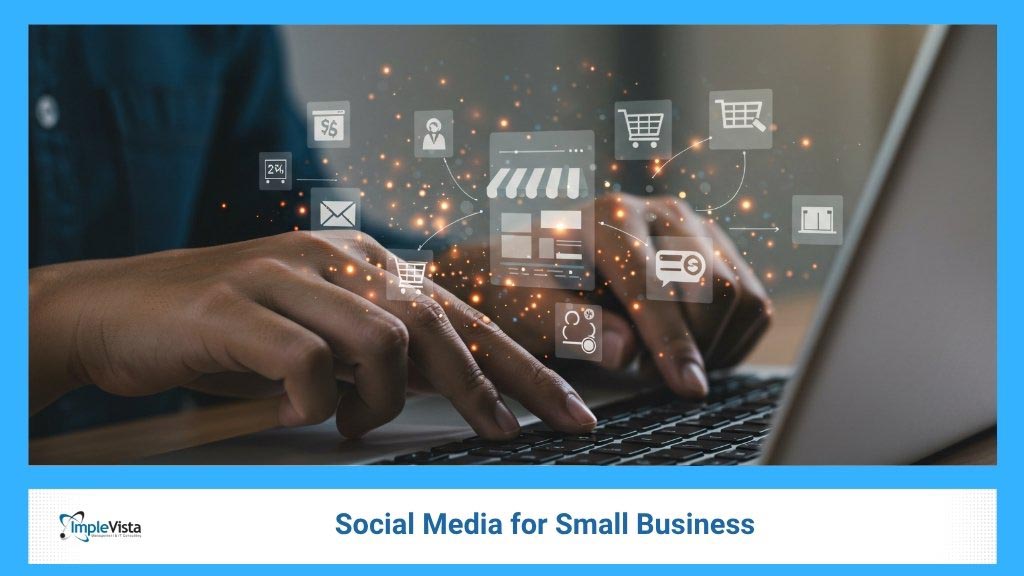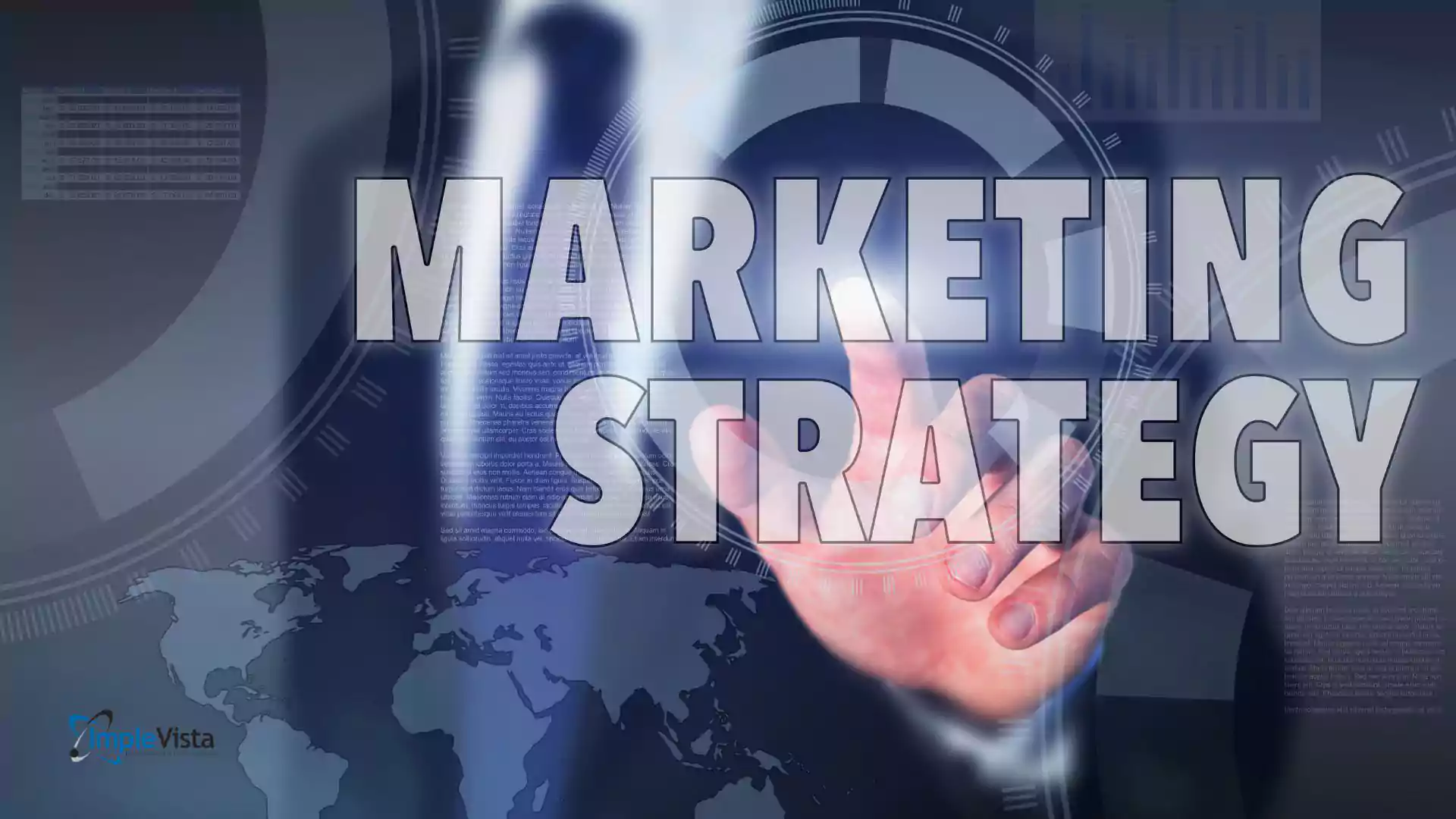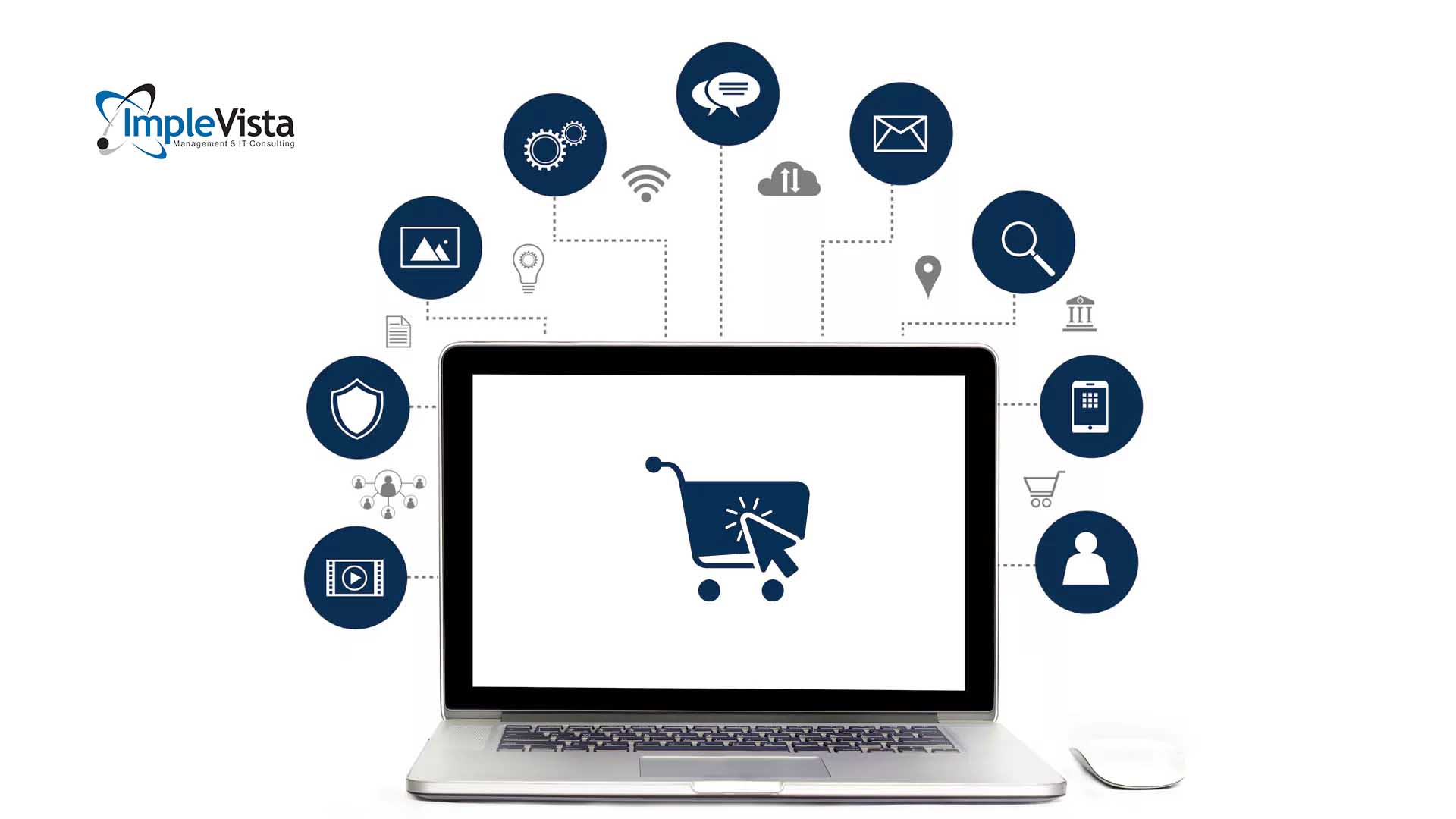In today’s digital landscape, social media marketing for small business is more than just a buzzword—it’s a necessity for growth. Small business owners can leverage social platforms to compete with bigger brands on a tight budget. Customers now spend hours on platforms like Facebook and Instagram, so establishing a social presence is essential. For example, Salesforce notes that “social media marketing is one of the most powerful tools small businesses can use to capture audiences organically”, highlighting how social media marketing for small business can reach highly targeted audiences effectively.
Having a social media profile also builds trust. Consumers often vet a business’s online presence before buying. As one expert observes, “Consumers expect businesses to be on social media, so it’s crucial to have profiles on popular social media sites to pass the initial credibility check”. In other words, if a small business isn’t on social media, customers may assume it’s outdated or illegitimate. By contrast, an active Facebook or Instagram page gives credibility and keeps customers informed about products or services.
Moreover, social media marketing offers small businesses precise targeting and analytics. Unlike traditional ads, you can run a Facebook or Instagram campaign and target your exact customer profile by location, age, interests, or behavior. This means every advertising dollar goes toward people likely to buy. Real-time analytics let you see which posts or ads work best and adjust on the fly. For instance, if a certain post attracts lots of clicks, a small business can boost it to a larger audience. This level of control and measurability is rare in traditional media, making social marketing highly efficient.
Finally, social media enables small businesses to compete affordably with larger brands. Implevista notes that “social media marketing is more than just a buzzword; it’s a necessity for businesses looking to grow and thrive”. With engaging content and smart targeting, a local shop can achieve visibility and engagement that old media (TV, print) could never affordably deliver. In short, leveraging social media marketing for small business is no longer optional—it’s a core part of success.
Why Social Media Marketing for Small Business is Critical
Small businesses face tight budgets and heavy competition. Social media marketing addresses these challenges directly. It lets even tiny companies reach customers on a national or global scale with minimal cost. In fact, Business.com highlights that with “over 5 billion active social media users worldwide,” ignoring social media means “missing massive opportunities for customer acquisition and retention”. It also creates a level playing field: a small bakery’s Instagram post can reach more viewers than a costly billboard could.
Another critical reason is customer engagement. Unlike a one-way TV or print ad, social media is conversational. Customers can ask questions, leave reviews, and share feedback directly on your page. This two-way interaction builds relationships. For example, when a customer comments on a product photo, the business can reply instantly, demonstrating customer care. These interactions not only foster loyalty but also signal algorithms to show your content to more people.
As Oregon SBDC notes, each social interaction “allows you to reach your target audience cost-effectively while engaging current and past customers and attracting new business opportunities”. In practice, a single helpful or inspiring post can generate many likes and shares, amplifying brand awareness far beyond your existing followers.
Social media also generates targeted leads and sales. Platforms like Facebook and Instagram offer built-in tools (like Facebook Shops or Instagram’s “Shop Now” links) to let followers buy products directly. Many small businesses have seen real ROI: Business.com reports that “strategic social media use delivers measurable ROI through increased brand awareness, customer trust and direct sales conversions”.
In other words, people who discover your brand on social media often become customers. In a follow-up section we’ll cover how to measure and optimize these results, but even qualitatively, the data is clear: social media marketing drives customer acquisition for small business.
A final point: social media marketing requires agility and creativity rather than a big budget. Content that resonates – whether a behind-the-scenes video, a user-generated photo, or a fun infographic – can capture attention at virtually no cost. As sales channels become saturated, small businesses that can quickly adapt their social strategy often gain an edge. In summary, social media marketing for small business empowers small brands to build awareness, engage customers, and increase sales in ways that traditional marketing can’t match.
Key Benefits of Social Media Marketing for Small Business
Social media marketing for small business offers a wide array of benefits when used effectively. Here are some of the top advantages:
- Brand Awareness and Visibility. Social media gives small businesses a powerful megaphone to reach new audiences. Data from recent research shows people ages 16 to 54 often discover products on social media, highlighting the opportunity for brand awareness. With one post or campaign, businesses can connect with potentially millions of users. For instance, the Oregon SBDC notes that “All social media channels offer free access to a vast audience of potential customers… endless opportunities to increase brand awareness”. Social media marketing for small business allows creative content (like short videos or infographics) to go viral, dramatically amplifying a brand’s reach beyond its local neighborhood.
- Targeted Reach and Lead Generation. Platforms like Facebook and Instagram let you target ads to very specific audiences (by age, location, interests, etc.). This means a local coffee shop can advertise only to coffee-lovers within a 5-mile radius, for example. By zeroing in on the right audience, small businesses spend less on wasted impressions and get more qualified leads. Oregon SBDC explains that brick-and-mortar businesses can target people who live in or travel through their specific location. This kind of localized targeting can’t be matched by most other channels. As a result, social media campaigns often drive new website visits or in-store visits at a very low cost per customer.
- Customer Engagement and Loyalty. Social media fosters two-way communication. Customers can “like,” share, or comment on a post, which builds a community around the business. Small businesses can answer questions, reply to feedback, and even run polls or contests. This engagement creates personal connections and brand loyalty. For instance, a bakery that shares fun baking tips and responds to every comment will keep customers coming back. Each comment or share acts as a personal endorsement. As one marketer puts it, such interaction “helps foster a positive brand reputation”. Ultimately, customers feel heard and valued, which translates into repeat business.
- Cost-Effective Marketing and Strong ROI. On social platforms, small businesses can start for free by posting content. Paid ads are highly scalable: you decide your budget and can start with as little as a few dollars a day. This is much more affordable than traditional ads (like print flyers or radio spots). Despite the low cost, the impact can be huge. Business.com notes that with strategic use, social media delivers “measurable ROI through increased brand awareness, customer trust and direct sales conversions”. In practice, many small business owners find that a well-targeted Facebook ad or a promoted Instagram post brings in more customers per dollar spent than almost any offline channel.
- Increased Website Traffic and Sales. Every social media post is also an opportunity to drive traffic to your website. By including calls-to-action (“Shop now,” “Learn more,” “Sign up”) in posts, businesses guide interested followers to their site or online store. This boosts website traffic from a highly engaged audience. And because those visitors came via social channels, they’re often more ready to buy or subscribe. The Oregon SBDC points out that social media complements other marketing channels. For example, a post about a blog article can send readers to your site where they sign up for a newsletter. Or a promoted product post can send users directly to the purchase page. In each case, social media serves as a funnel to bring new customers into the sales process.
- Valuable Insights and Analytics. Social platforms come with built-in analytics dashboards. Small business owners can see in real time which posts get clicks, likes, and shares, and which ads get clicks or conversions. These metrics allow quick optimization. For example, if a live video on Instagram performs better than static images, a business can plan more live streams. If an ad targeting 30-40 year-olds has high sales, allocate more budget there. This data-driven approach means resources are used efficiently. In short, you can measure exactly how social media marketing impacts your goals and continually improve your strategy.
- Improved Customer Service. A business that responds quickly on social media earns trust. Many customers now message brands on Facebook or Instagram for help, expecting prompt replies. By being available and helpful, small businesses demonstrate strong customer care at no extra cost. For example, solving a customer’s problem on Twitter in the moment can turn a frustrated person into a loyal fan. Additionally, social reviews (on Facebook or Google) can be solicited, building social proof. Monitoring social media also lets a business hear what customers are saying about them or competitors – valuable feedback for improvement.
Putting these benefits into action can truly transform a small business. For example, great content drives shares and word-of-mouth. If a customer sees a friend’s post about your store, they may decide to try you out. The viral potential means that even small initial audiences can expand quickly: each share exposes the brand to a new network of potential customers.
The targeted nature of social media also leads directly to results. A local bakery, for instance, can run an Instagram ad to people in its city who like pastries. When those people click through and make a purchase (online order or store visit), that proves ROI. By tracking which ads led to sales, the bakery can repeat the winning approach. Business.com notes that strategic social campaigns boost both brand trust and sales conversions. In practice, focusing ads on engaged audiences often yields a strong uptick in orders or sign-ups.
In summary, social media marketing for small business provides a toolkit of affordable, powerful methods to increase visibility, engage customers, and drive sales. These channels level the playing field, allowing small businesses to punch above their weight with creative, targeted marketing.
Essential Social Media Platforms for Small Business
Not all platforms are the same, and small businesses should choose wisely:
- Facebook. The largest social network (3+ billion users globally). Nearly 200 million small businesses already have Facebook pages. It’s ideal for all kinds of businesses—retail shops, services, restaurants—thanks to its broad reach and local targeting options. Features like Facebook Shops and Groups help build a customer base. For social media marketing for small business, Facebook offers robust tools (like Business Pages) to showcase products, collect reviews, and share local events. If you’re B2C or run a storefront, having a Facebook presence is a must for visibility.
- Instagram. A visually-driven platform (images, Stories, Reels) with about 2 billion users worldwide. It skews younger and is great for products or services that are visually appealing (fashion, food, art). Small businesses can use hashtags and geotags to reach local audiences. For social media marketing for small business with compelling images or videos, Instagram can be especially powerful. Posts and ads here often get high engagement, which amplifies reach. (Tip: 90% of Instagram users follow at least one business account, so your brand can fit right in.)
- LinkedIn. A professional network with ~900 million members. Best for small businesses offering B2B products or professional services. LinkedIn helps you position yourself as an expert. You can post industry articles or company news. While LinkedIn’s audience may be niche, it’s very effective if your customers are other businesses or professionals. (For example, a local consulting firm or software agency could use LinkedIn to attract clients and recruits.)
- Twitter (X). Good for real-time updates, news, and customer interaction. Small businesses can engage in trending conversations or use hashtags to increase visibility. For instance, a café could tweet daily specials. Twitter is also useful for quick customer service (customers often tweet questions or complaints). Content spreads via retweets, which can give a quick boost in followers when something resonates.
- TikTok. A platform for short-form videos, with 1.8+ billion users (mainly younger audience). For small businesses that can create fun, creative videos (think behind-the-scenes, how-to, or trend-based content), TikTok can yield viral results. It’s less traditional but can be very effective for generating buzz. Even if you don’t target Gen Z specifically, it’s worth considering if your products or brand have a strong visual or entertaining aspect.
Choose 1–3 platforms where your customers spend the most time. It’s better to have a strong presence on a few platforms than a weak one on many. For most local small businesses, starting with Facebook and Instagram makes sense. For a small B2B firm, LinkedIn might be the priority. Once you’ve chosen, fill out your profiles completely (logo, contact info, business hours, website link) so people and search engines find you easily.
Crafting an Effective Social Media Strategy
Having profiles is just the start. To succeed, small businesses need a strategy:
- Set Clear Goals and Audience. Define what you want (awareness, leads, sales, etc.) and know who you’re talking to. Create a simple customer persona (age, location, interests). For example, a local gym may target young adults interested in fitness. Knowing this guides your content and platform choice. Social media marketing for small business works best when the messaging speaks directly to your target audience’s needs or interests.
- Content Planning. Plan your posts in advance (use a calendar). Mix content types: educational tips, product showcases, behind-the-scenes, and promotions. For instance, a florist might post care tips for bouquets, photos of new arrangements, and special discount alerts. High-quality visuals are crucial—use clear photos or short videos. Consistency in style (colors, tone) helps your brand stand out. For example, always use your logo on images and stick to a friendly, conversational tone.
- Engagement and Community. Social media rewards engagement. Ask questions in your posts (“Which flavor should our cake be?”), run polls, or host giveaways to encourage likes and shares. Always respond to comments and messages within a day. Celebrating customer photos (with permission) or shout-outs makes people feel valued. Remember, every comment or review is valuable feedback. Prompt, genuine interaction builds loyalty and encourages others to engage.
- Utilize Paid Ads. Even a small budget can amplify reach. Try boosting a post that’s already doing well organically (it might reach thousands more). Set a daily ad budget that fits your means. Platforms let you target exactly (e.g. by zip code, interests, behavior), so even $5/day can reach hundreds of local prospects. Testing different ads is easy: change up the image or call-to-action and see which one drives more clicks.
- Leverage Analytics. Use platform analytics (Facebook Insights, Instagram Insights) and Google Analytics for your website. Track which posts get the most engagement and which ads lead to sales. For example, if video posts are outperforming photos, plan more video content. If an ad targeting 25-34 year-olds yields better results, adjust targeting accordingly. Continuously refine your approach. Over time, data will reveal your highest-ROI tactics.
By following these steps, small businesses turn social media marketing into a strategic, results-driven process rather than random posting.
Benefits of Using Social Media Marketing for Local Small Businesses
Local small businesses have special advantages with social media marketing for small business. Key benefits include:
- Geotargeted Advertising: Social platforms allow ads to be targeted by specific locations. For example, you can run a Facebook or Instagram ad only to users in your town or neighborhood. This ensures your marketing dollars reach the local people most likely to visit your store. No other advertising channel offers such precise location targeting for small budgets.
- Community Engagement: Social media lets local businesses connect with their community. Posting about neighborhood events, featuring local customers, or collaborating with nearby businesses helps you tap into local networks. A restaurant could highlight a local food supplier, or a shop could partner with a local influencer. These local tie-ins increase word-of-mouth.
- Real-Time Local Deals: If you have a real-time special (e.g., happy hour, flash sale, event), social media is ideal for quick promotion. A timely Instagram Story or a pinned Facebook post reaches people instantly. Since many users check social apps constantly, they can see the offer and act on it (e.g., come by the store right away). This immediacy is a big advantage for local promotions.
- Boosting Local SEO: Social media also helps your search visibility. Consistent name, address, and phone (NAP) across social profiles and Google My Business confirms your location to search engines. For instance, ensuring your Facebook page and website list the same address and phone number helps Google trust your listing. When someone searches “best pizza near me,” they may see your GMB listing with active social updates, which boosts your credibility. In short, active social signals support local SEO.
- Humanizing Your Brand: People love stories behind local shops. Social media is great for sharing your journey, introducing staff, or showing how products are made. This personal touch resonates with local audiences. For example, a small bakery can share staff birthday celebrations or a family photo. These stories build a personal brand and make customers feel connected.
The Oregon SBDC notes that no other advertising channel gives local businesses the reach social media provides at this cost. In practice, customers often discover new local businesses via social media and then spread the word. By using location tags, local hashtags, and encouraging check-ins, small businesses can turn social buzz into real foot traffic and sales.
Measuring Success and ROI
One of the greatest advantages of social media marketing is that everything is measurable. Small businesses should regularly track:
- Engagement Metrics: Monitor likes, comments, shares, and follower growth. Spikes in engagement show what content resonates. For example, a surge in comments on a giveaway post indicates high interest.
- Website Traffic & Conversions: Use tools like Google Analytics to see how many visitors came from social posts or ads. Track actions (e.g., purchases, sign-ups) originating from social media. For instance, if 50 people clicked “Shop Now” on your Facebook ad and 5 bought something, that’s direct ROI data.
- Lead Generation: If capturing leads (emails, sign-ups) is a goal, use platform forms or landing pages. Track how many leads come from each campaign. Many businesses find that running a simple Facebook lead ad (e.g., offering a free consultation) can deliver dozens of leads per month at a low cost.
- Ad Performance: If you use paid ads, monitor metrics like click-through rate (CTR), cost-per-click (CPC), and return on ad spend (ROAS). Platforms report these in real time. For example, if an ad costs $1 per click and 20% of those clicks convert, you can calculate ROI directly.
Regular analysis tells you what’s working. If one platform or ad type is underperforming, reallocate budget. If a certain demographic is responding well, focus on them. Studies show that the majority of marketers use social media to improve audience segmentation and personalization, which small businesses can do too by refining their targeting based on results.
In short, connect your social efforts back to concrete business goals. Whether it’s increased sales, more walk-in traffic, or higher sign-up rates, you can measure it. Use these insights to continually optimize and justify your investment in social media marketing.
Best Practices and Tips
- Post Consistently: Aim for a regular schedule (e.g., 3–5 times per week). Consistency keeps your brand top-of-mind. Use scheduling tools (like Buffer or Hootsuite) to plan posts ahead, so you never miss a day.
- Focus on Quality Content: High-quality images and videos grab attention. Even a smartphone photo can work if it’s clear and well-lit. Write catchy captions or include calls-to-action (“Tag a friend who’d love this!”) to encourage interaction.
- Leverage User-Generated Content: Encourage customers to share photos or reviews and then repost that content. For example, run a photo contest asking customers to post your product with a hashtag. Reposting this user content (with credit) provides authentic testimonials to your audience.
- Use Local Hashtags: On Instagram or Twitter, include local or niche hashtags (#DhakaFoodie, #DhakaShop) to reach people in your area. This helps local users find you when they search those tags.
- Collaborate Locally: Partner with complementary local businesses for contests or joint promotions. For instance, a gym and a health food store could run a joint giveaway. Both businesses gain exposure to each other’s followers.
- Monitor Reviews: Keep an eye on comments and reviews on all platforms (Facebook reviews, Google reviews, etc.). Promptly thank happy customers and address any issues calmly. Good social customer service can turn a negative into a positive.
- Stay Flexible: Social media trends change. Pay attention to new features (like Instagram Reels or Facebook Live) and experiment. Also watch competitors or industry leaders for ideas. Small businesses have the agility to try new things quickly.
Frequently Asked Questions
What is social media marketing for small business?
Social media marketing for small business involves using platforms like Facebook, Instagram, Twitter (X), LinkedIn, or TikTok to promote your products or services. It means creating and sharing content (posts, ads, videos) tailored to your audience. The goal is to increase brand awareness, engage customers, and drive traffic to your website or store. For example, a local cafe posting daily menu specials on Instagram is doing social media marketing.
Why is social media marketing important for small business?
Social media marketing is important because it allows small businesses to reach customers where they are already spending time—often at low cost. It builds brand awareness and credibility (customers expect you to have a social profile). It also offers powerful targeting and data analytics, so you can find the right customers and measure your results. Research shows that a huge number of people discover products on social media, so it’s a critical channel for attracting new customers.
How can a small business benefit from social media marketing?
Small businesses benefit by gaining visibility, reaching new customers, and building relationships. For instance, posting engaging content (like product photos or how-to videos) can generate shares that introduce your brand to people who never heard of you. Social media ads let you target local audiences with special offers. Quick customer service on social media improves reputation. Overall, it drives traffic and sales; many small businesses see a direct increase in customers after starting a campaign.
Which social media platforms should small businesses use?
It depends on your audience. Facebook and Instagram are the most common because of their huge user bases and ad tools. If you sell visually appealing products, Instagram can be great. If you offer B2B services, LinkedIn might be better. New platforms like TikTok work well if your target is young and you can create fun videos. The key is to pick where your customers are active and start there.
How much should small businesses spend on social media marketing?
Social media marketing can fit any budget. You can start with free organic posting. For ads, start small (even $5–$10 per day) and test results. A typical small business might spend anywhere from $100 to $500 per month on ads, depending on goals. The good news is you control spending: you can boost a post whenever you see engagement, and pause spending any time. Even a modest budget can reach hundreds or thousands of targeted local customers.
How often should a small business post on social media?
There’s no one-size-fits-all, but consistency matters. A common guideline is posting 3–5 times per week on platforms like Facebook or Instagram. Too-frequent posting can overwhelm followers, while too-infrequent means missing opportunities. Monitor engagement: if you post and engagement drops, you might be posting too much. Use analytics to find a sweet spot. Tools like content calendars or scheduling apps help maintain a steady rhythm.
What content should small businesses share?
Share content that is relevant and engaging to your audience. Ideas include product photos, behind-the-scenes glimpses of your business, how-to tips related to your industry, and special promotions. For example, a boutique might post outfit inspiration, while a bakery could post fresh pastry photos. Always include attractive visuals (high-quality images or short videos) and a clear message. Sharing customer testimonials or success stories can also be very effective.
How do small businesses measure the success of social media marketing?
Success is measured through metrics. Common ones include: engagement (likes, comments, shares), follower growth, website traffic from social links, leads or sales generated via social campaigns. Use platform analytics (like Facebook Insights) to see these numbers. For example, if you run a Facebook ad, check how many clicked the link and how many of those turned into orders. Google Analytics can also track how many website visits come from social sources. By comparing these metrics to your goals, you can gauge success and ROI.
Is social media marketing better than traditional advertising for small business?
Social media marketing offers advantages for small businesses: it’s usually cheaper, highly targeted, and interactive. For example, you can show ads only to people near your shop who like your type of product. Traditional ads (like flyers or billboards) don’t allow that level of precision. However, both can work together. Some small businesses still use local newspaper ads or radio, but most are shifting dollars online because of the measurable impact.
Should I hire a professional agency for social media marketing?
It depends on your resources. Many small business owners start by doing social media themselves. With some learning and free tools, you can achieve good results. However, if you lack time or expertise, a specialized agency (like Implevista) can save you effort. Agencies bring experience in crafting strategy, designing content, and optimizing campaigns. If quick growth is a priority and you have the budget, hiring an agency or consultant can accelerate results. Otherwise, start small, learn as you go, and consider help later.
Social media marketing for small business has become an essential growth tool. It increases brand visibility, engages customers directly, and drives targeted traffic at a low cost. Small businesses that embrace social media can effectively compete in today’s digital marketplace.
Ready to leverage the power of social media marketing for your small business? Contact Implevista Digital today to discuss how our Social Media Marketing services can help you stand out online. Interested in learning more? Explore our Digital Marketing Blog for more tips, or subscribe for updates. Let Implevista be your partner in taking your small business to the next level.







